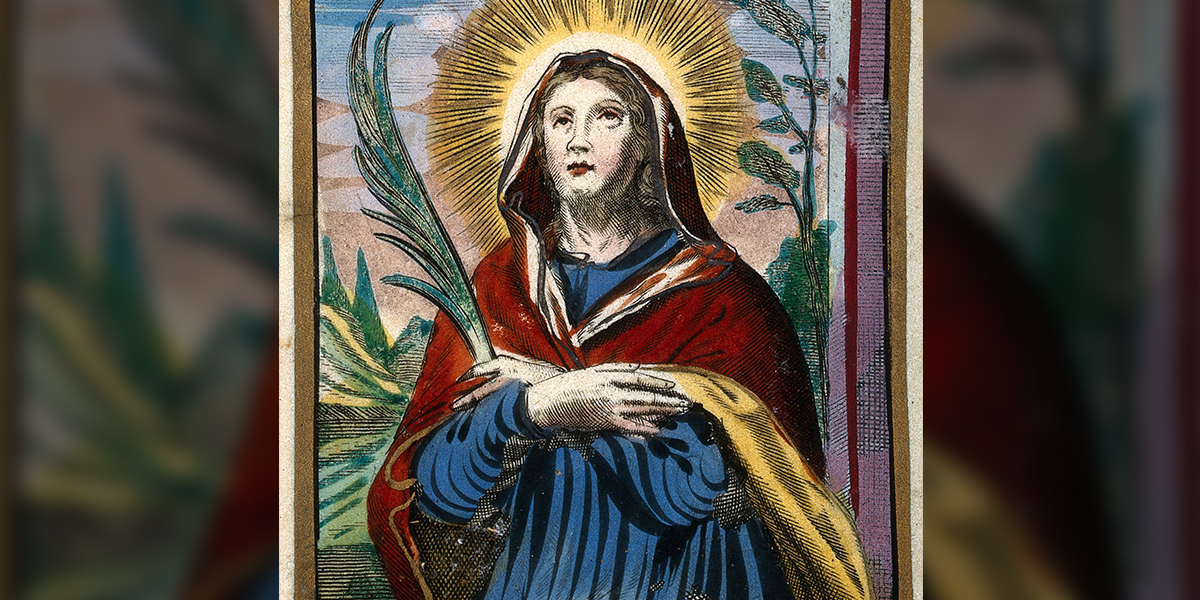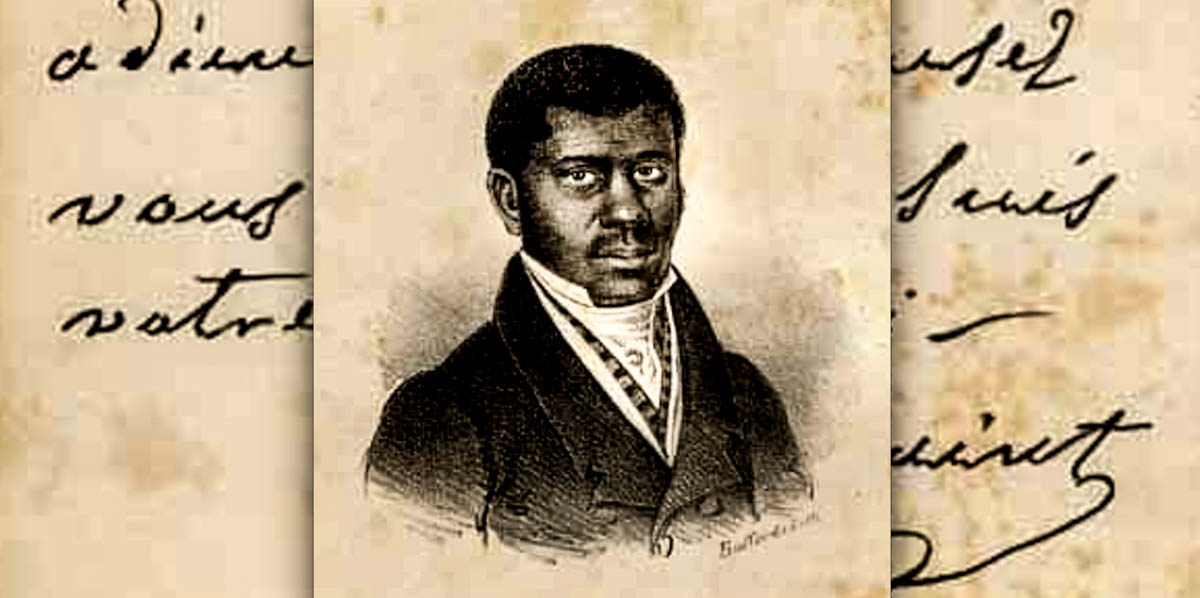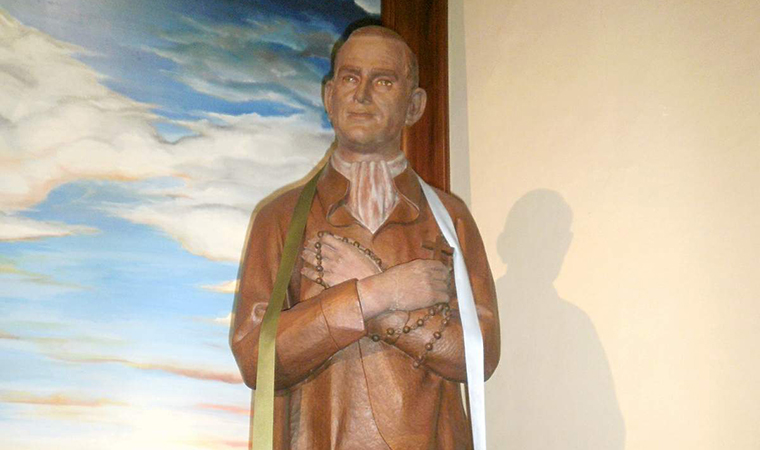It’s inspiring to get to know some of the many people who have achieved sanctity as part of adoptive families.Though the official patron of adoptive families is St. William of Rochester, a 12th-century Scottish man who was murdered by his adopted son, there are a number of saints who had healthy adoptive relationships. These men and women can serve as intercessors for a beautiful and often difficult family situation.
St. Seraphia (d. 126) and St. Sabina (d. 127) had an unusual adoptive relationship. Seraphia was raised by Christian parents. When they died, she felt called to consecrate herself to the Lord; she sold all her possessions and then sold herself into slavery to the pagan Sabina in order to convert her mistress. Won over by her slave, Sabina freed Seraphia and adopted her as a daughter. After Seraphia was martyred, Sabina buried her and was martyred herself the following year.

St. Mary of Edessa (d. 371) was born to a noble family in Syria. She was orphaned at 7 but adopted by her uncle, the hermit St. Abraham Kidunaia (267-366). For 20 years, Mary lived as an anchoress. When she fell into sin, though, she ran away and became a prostitute, convinced that she was unworthy of mercy. St. Abraham went to find her, leaving his hermitage for the first time in 20 years because his little girl needed him. He paid to spend the night with Mary, then went up to her room and fell on his knees, begging her in tears to come home. Because her father’s love showed her the Father’s love, Mary agreed and soon became a miracle worker, a testimony to God’s tremendous mercy.
St. Thomas More (1478-1535) is famous for his fatherly love, his letters to his oldest daughter being among his most beautiful writings. But the lawyer martyred by King Henry VIII was a stepfather and an adoptive father as well. When his oldest child’s wet nurse died shortly after weaning Margaret More and her own little girl, Margaret Giggs, the Mores adopted little Margaret Giggs. They went on to have three more children before More’s first wife died. He married again soon after and raised his second wife’s daughter as his own. When More was martyred in 1535, his adopted daughter, Margaret Giggs, was the only family member to witness his execution.
Blessed John and Magdalena Minami (1568-1603, 1560-1603) were a married Japanese couple of the Samurai class. They adopted John’s nephew St. Louis Minami (1596-1603) and together the family was martyred, John by decapitation and his wife and son by crucifixion.
Venerable Pierre Toussaint (1766-1853) was born into slavery in Haiti but was brought to New York City and later freed. He became a hairdresser and, with his wife, an important philanthropist in New York society. Though the couple had no biological children in their 40 years of marriage, they adopted Pierre’s niece after her mother’s death, had many foster children, and purchased the freedom of dozens of slaves.

St. Mark Chong Ui-Bae (1794-1866) lost his first wife early in their marriage and lived as a widower for many years before encountering the Gospel and becoming Catholic. After his conversion, he married again. Unable to conceive, he and his second wife adopted her nephew. When persecution broke out in Seoul, Ui-Bae helped others escape to safety, but was himself captured and martyred.
St. John Yi Mun-u (1810-1840) was born to a noble Catholic family in Korea. When he was orphaned at 5 years old, a Catholic woman adopted him and ultimately encouraged him to marry. After the death of his wife and two children, he spent his life serving the Church, especially the missionary priests. He risked his life to bury those priests after they were martyred and was himself captured and killed.
Bl. Ceferino Jimenez Malla (1861-1936) was a Spanish Roma horse trader. Though married for 40 years, he and his wife were unable to conceive. When Ceferino was nearly 50, they adopted Pepita, his wife’s niece. He doted on the girl; when she married, the couple moved in with the widowed Ceferino who later was just as fond of his grandchildren. He was martyred in the Spanish Civil War for refusing to stop praying the Rosary.

Bl. Eurosia Fabris (1866-1932) was a young woman when her neighbor died and left behind two small daughters. After six months of helping to care for the children, Eurosia felt called to adopt them, so she married their father, adopted the girls, and went on to have six more children with her husband and adopt another three. Other than her remarkable prayer life, Eurosia’s life was unusual only in the quantity of her children.
Bl. Luigi Beltrame Quattrocchi (1880-1951) was adopted at age 11 by a childless aunt and uncle. Though he remained close to his birth family, he took his adoptive parents’ last name and moved with them to Rome. There he met the woman who would become his wife, Bl. Maria Quattrocchi (1884-1965). The two married and had four children, living a fairly ordinary life with remarkable fidelity.

Read more:
Pope promotes adoption, asks for help to create a “global attitude”

